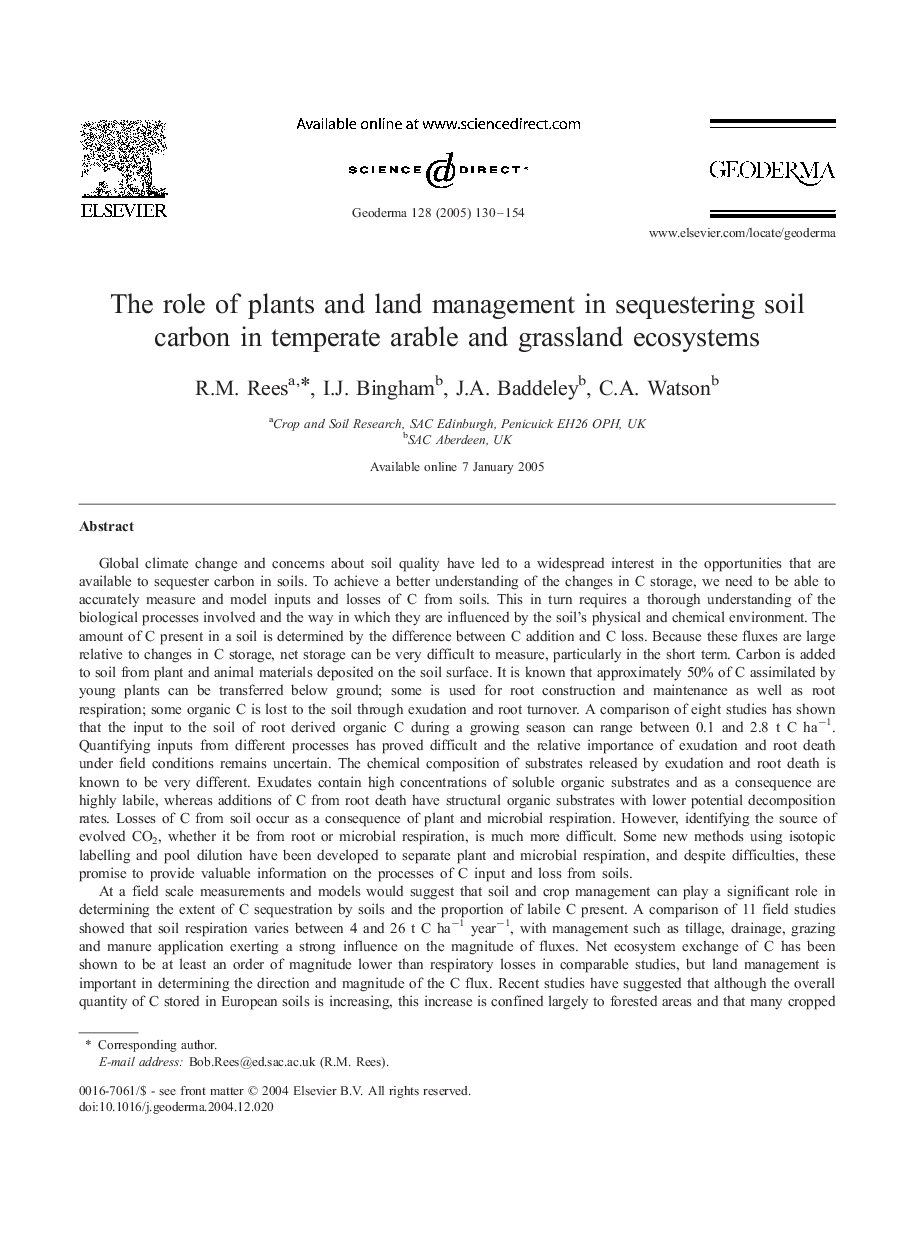| Article ID | Journal | Published Year | Pages | File Type |
|---|---|---|---|---|
| 9490417 | Geoderma | 2005 | 25 Pages |
Abstract
At a field scale measurements and models would suggest that soil and crop management can play a significant role in determining the extent of C sequestration by soils and the proportion of labile C present. A comparison of 11 field studies showed that soil respiration varies between 4 and 26 t C haâ1 yearâ1, with management such as tillage, drainage, grazing and manure application exerting a strong influence on the magnitude of fluxes. Net ecosystem exchange of C has been shown to be at least an order of magnitude lower than respiratory losses in comparable studies, but land management is important in determining the direction and magnitude of the C flux. Recent studies have suggested that although the overall quantity of C stored in European soils is increasing, this increase is confined largely to forested areas and that many cropped soils are losing soil organic matter. It is has been suggested that that the biological potential for C storage in European cropland lies between 9 and 120 Mt C yearâ1. In order to take advantage of this potential and to develop management systems that promote C storage we need to achieve a better understanding of the processes of C input and loss, and develop improved models using pools that coincide with measurable soil C fractions.
Keywords
Related Topics
Physical Sciences and Engineering
Earth and Planetary Sciences
Earth-Surface Processes
Authors
R.M. Rees, I.J. Bingham, J.A. Baddeley, C.A. Watson,
